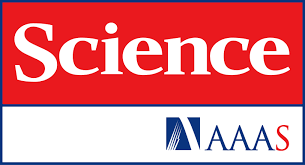Simanaitis Says
On cars, old, new and future; science & technology; vintage airplanes, computer flight simulation of them; Sherlockiana; our English language; travel; and other stuff
SCIENCE (AND GENERATIVE A.I.) IN ACTION
THIS ALL STARTED WITH AN INTERESTING LITTLE ITEM in the “News” section of AAAS Science magazine, May 3, 2024. Its heading read “Physiology: All Dog Noses Are Created Equal.” And it had a tantalizing first line: “Sherlock Holmes could have used a pug, not his favored bloodhound, to sniff out clues and gotten the same results, a study suggests.”
Hmm…. Tell me more.

Before long, I learned more about canine olfaction than most of us need. I also learned more about science as a progressive activity. And I learned as well about the shortcomings of Generative Artificial Intelligence.

Briefly. The Science magazine item cites “In a preprint study posted last month on bioRxiv, researchers reported using CT scans of skulls of 45 dog breeds to measure a bony structure, the cribriform plate, that is perforated by olfactory nerves.”
It continues, “They also looked for difference in the number of copies of genes associated with detecting scent. No breeds stood out, and all were bested on the same tests by wolves and coyotes—perhaps, the study’s authors say, because domestication slackened the evolutionary pressure for a sharp olfactory sense to find food.”
More Details from Science Online. “All Dog Noses—Whether a Pug’s or a Bloodhound’s—Are Created Equal,” is an expanded version of the AAAS Science News item, this one by Madeline Reinsel, Science Online, April 26, 2024.
Reinsel writes, “It all boils down to behavior and training—and not any intrinsic scent-detection skills—according to a preprint study posted this month on bioRxiv, which found no evidence that some domestic dog breeds have better senses of smell than others. Sherlock might look beyond the kennel for assistance, however: The researchers did find that wolves and coyotes have superior sniffers compared with their domesticated cousins.”
Methodology. Reinsel says, “It can be difficult to test whether some dogs have superior sniffing skills or they’re just good at following directions. So, [researcher Deborah] Bird and colleagues opted to test the scent-detecting abilities of domestic dogs, wolves, and coyotes by examining their skulls and genetic material. They used CT scans to create 3D models of 104 skulls from 45 different dog breeds, one wolf species, and one coyote species. Then, they used those models to measure the area of a bony structure in the skull known as the cribriform plate, which is perforated by olfactory nerves that shuttle scent information to the brain. A larger cribriform plate, relative to a mammal’s body size, can indicate a better sense of smell.”

Scientists examine dog skulls from the mammal collection at the California Academy of Sciences. Image by Deborah Bird from Science.
Reinsel recounts, “From these measurements, the researchers concluded domestic dogs—a category that includes ancient breeds such as dingoes and basenjis, which existed before modern dog breeding, as well as familiar breeds such as spaniels and corgis—likely have less sensitive noses than wolves and coyotes. Having a strong sense of smell can be metabolically costly, Bird notes, so it’s possible that domestication and reliance on humans for food slackened the evolutionary pressure to maintain such a sharp olfactory edge.”

Yet More on bioRxiv. Seeking the original paper, I Googled ”bioRxiv dog noses.” Success: Top of the list was “Genetic and Anatomical Determinants of Olfaction in Dogs and Wild Canids,” Alice Mouton, Deborah Bird, et al., bioRxiv, April 16, 2024.
Note, I could just have clicked on Reinsel’s highlighted “found no evidence….” link, but it was fortuitous I Googled matters.
In particular, with regard to olfaction and snout length, researchers conclude: “Contrary to popular belief that scent hounds [bloodhounds, beagles, and the like] have superior noses, our results reveal that scent breeds are not distinguished from other dog breeds in either OR gene repertoire, OR gene expression or relative cribriform plate size. Artificial selection for short faces in brachycephalic dogs [pugs, bulldogs, and the like] has not resulted in any significant reduction of the olfactory variables we measured.”
What’s more: “The apparent ability of some breeds to perform scent detection tasks better than others likely reflects aspects of behavior, such as motivation and trainability, rather than olfactory gene repertoire and anatomy.” Which, of course, agrees with the abbreviated Science item that got me into all this.
Generative A.I. into the Fray. Curiously, one of my subsequent searches was more specific, with puzzling results. I Googled “all dog noses are created equal” and here’s what I got: “No, not all dog noses are created equal.”

In particular, “Dogs with short noses, also known as brachycephalic breeds, have the least sensitivity to odor compared to other breeds…. Bloodhounds have the best sense of smell.”
Also, though sources including Science are cited, the entry is starred “A.I. Overview.” And at its end is a footnote “Generative A.I. is experimental.”
You’re telling me.
Science is constantly evolving. And I appreciate the cautionary footnote. ds
© Dennis Simanaitis, SimanaitisSays.com, 2024
